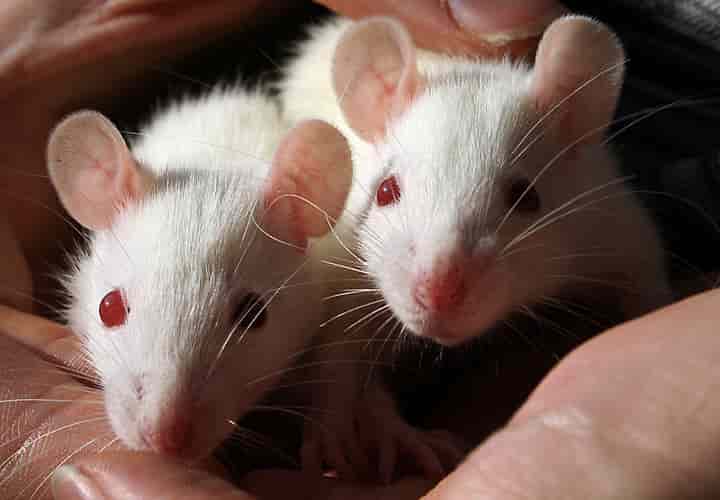Even though human beings are the closest to primates, yet we may share some traits with other species too. The latest example of that is rats! Yes, you read it right!
It was 10 years ago that researchers found that rats in the laboratory would willingly help their brethren in distress yet they would not extend the same assistance to those ones they considered outsiders. Now a study by the University of California, Berkeley has been able to map out those regions in the rat’s brain which help them prioritise their help to their near and dear one. Interestingly, the study also suggests that human beings may be sharing the same neural bias as that of the rodents!
Also read: Big eaters, Sea otters have to gorge to keep themselves warm in icy waters
The amazing findings made to the print in the journal eLife on July 13 (Tuesday). Selflessness is dictated by familiarity and social bonding than by pity or guilt.
Quoting Daniela Kaufer, Professor of Neuroscience and Integrative Biology at UC Berkeley and study senior author, an article in sciencedaily.com stated: "We have found that the group identity of the distressed rat dramatically influences the neural response and decision to help, revealing the biological mechanism of ingroup bias.”
Considering that the issues of identity and clashes on the basis of religion, ethnicity and race are assuming importance across the world, the conclusions drawn from this particular study suggests that in order to make human kind cohesive, integration is the key while separation is not the answer.
The lead author of the study and Assistant Professor of Psychobiology at Tel-Aviv University, Israel said: "Priming a common group membership may be a more powerful driver for inducing pro-social motivation than increasing empathy.”
The study was launched by Bartal in 2014 as a postdoctoral Miller fellow in Kaufer's laboratory at UC Berkeley. The research team was led by Bartal, Kaufer and Professor Dacher Keltner, a professor of psychology. Their objective was to identify the networks in the brain of the rat that responded to empathy. Besides, they also decided to find out if this holds true for the humans too. The results of the study showed that it does.
Talking about this point, Bartal said: "The finding of a similar neural network involved in empathic helping in rats, as in humans, provides new evidence that caring for others is based on a shared neurobiological mechanism across mammals.”
Also read: Meth snares brown trout, sea animals as it sneaks into waters as pollutant
The researchers used fibre photometry, immunohistochemistry, calcium imaging and other diagnostic tools, to study the rats and they found that the animals experienced sympathy for those rats who exhibited distress signs.
There was however, one overriding condition for this help. The empathy only took place when the helper rat’s neural reward circuitry was activated by another rat whose type was the same as that of the helper.
Elaborating on this point, Kaufer remarked: "Surprisingly, we found that the network associated with empathy is activated when you see a distressed peer, whether they are in the ingroup or not. In contrast, the network associated with reward signalling was active only for ingroup members and correlated with helping behaviour."
The empathy of the rats specifically correlated with the brain's sensory and orbitofrontal regions and also the anterior insula. The decision of the animal to help was connected to activity in the nucleus accumbens. Accumbens is a reward centre and it has neurotransmitters, including dopamine and serotonin.
The study involved more than 60 pairs of caged rats. These pairs were monitored during a timeframe of two weeks. The mix of the pairs was such that some were of the same genetic group or strain while others were not.
Also read: Climate change triggering change in colour of dragonflies
During the experiment, there would be one rat which was trapped inside a cylinder which was transparent. Meanwhile, there was another animal roaming in an enclosure around the cylinder. The trapped animal received an empathy signal from the one which was free and the latter would only get into action to free the former, if only the rodent was part of their group. The free creature would try to open the cage door by butting on it.
It was found that during the trials that while all animals were able to perceive the distress of the animals, the reward circuitry of their brain got into action when the distressed animal belonged to their group.
The interesting element of the study is that humans and other mammals share the same empathy and reward regions in the brain. Therefore, it suggests then that the prejudice to help those from ingroup too is common.
Bartal said: "Overall, the findings suggest that empathy alone doesn't predict helping behaviour, and that's really a crucial point. So, if you want to motivate people to help others who are suffering, it may be that you have to increase their feeling of belonging and group membership, and work toward a common identity."
She went on to add: "Encouragingly we find that this mechanism is very flexible and determined primarily by social experience. We will now try to understand how pro-social motivation shifts when rats become friends, and how that is reflected in their brain activity."




















